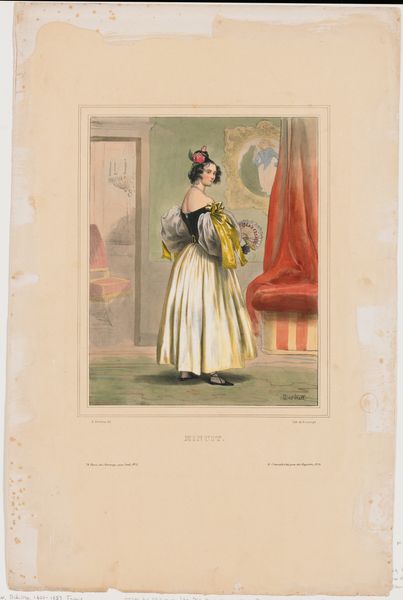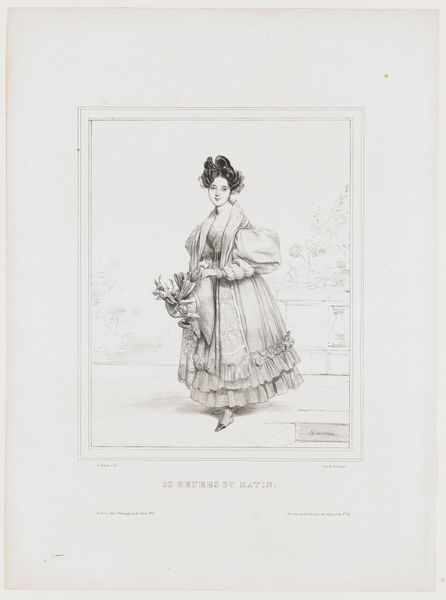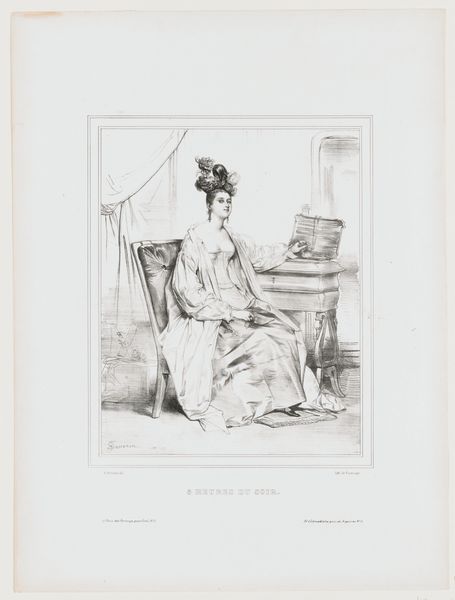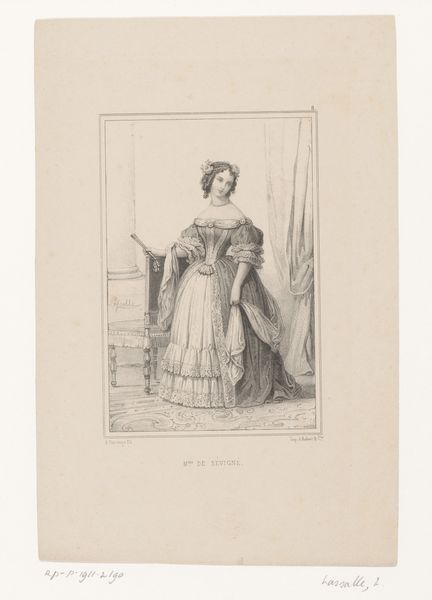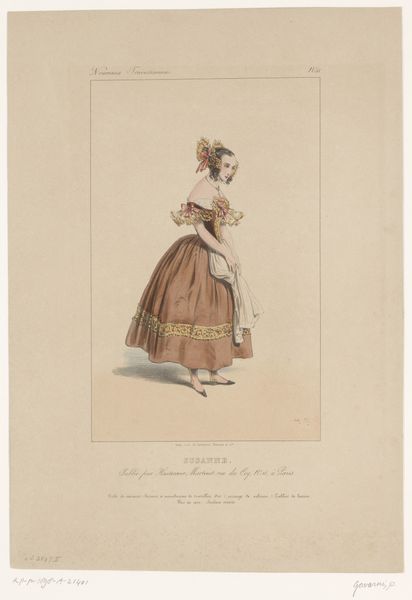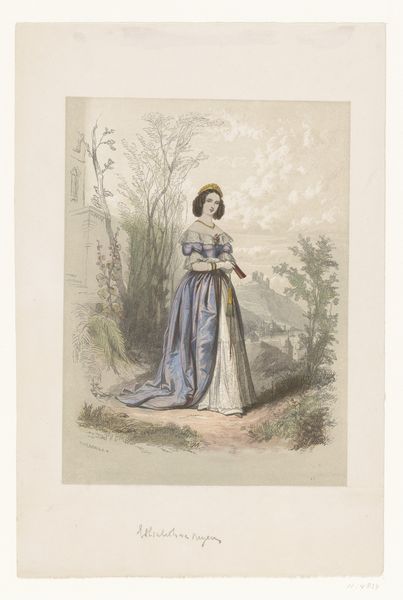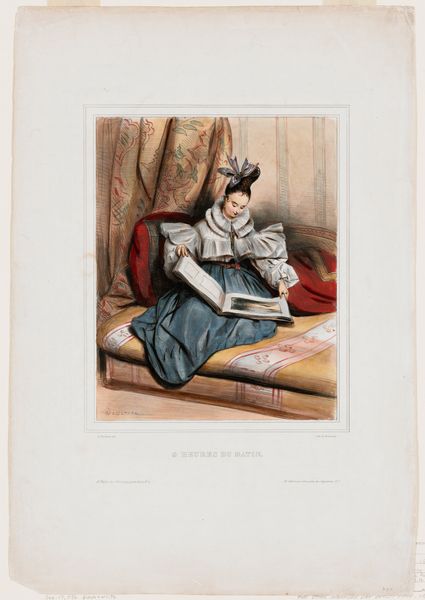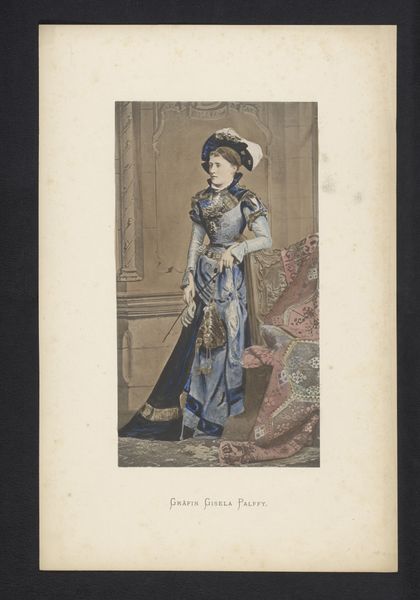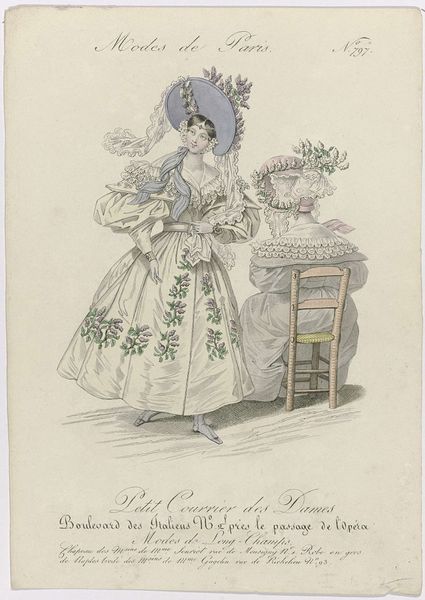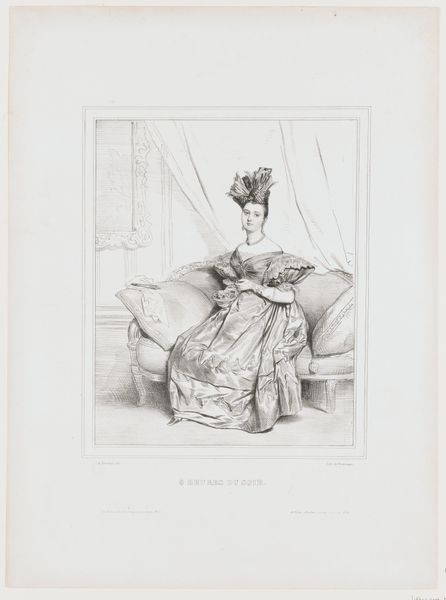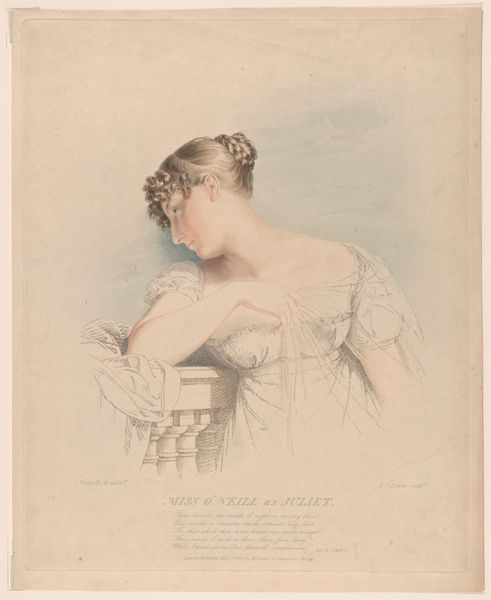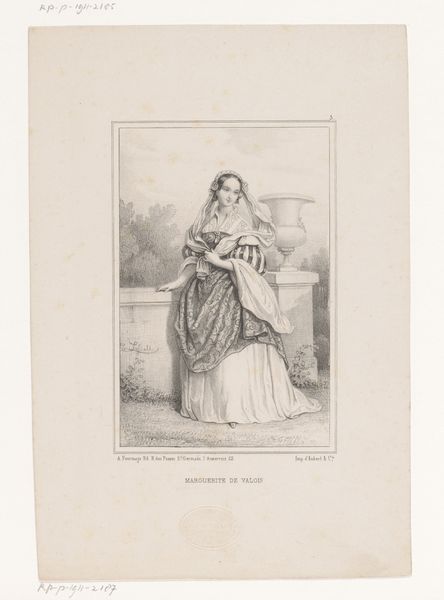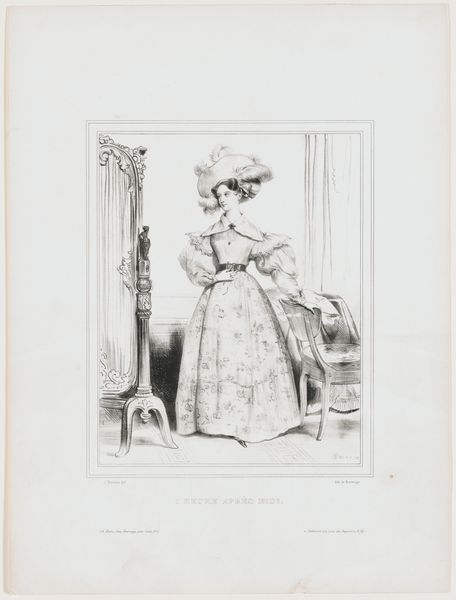
print, watercolor
portrait
figuration
watercolor
romanticism
watercolor
Dimensions: 13 1/4 x 9 1/4 in. (33.66 x 23.5 cm) (image)
Copyright: Public Domain
Editor: Here we have Achille Devéria's "Heures Du Soir. Mme. A. Deveria," a watercolor print from around 1830, housed at the Minneapolis Institute of Art. I'm struck by the somewhat melancholy air surrounding the subject, heightened by her covered face and the darkening 'heures du soir'—the evening hours. What layers of meaning do you think Devéria might be trying to express here? Curator: This portrait provides an intriguing lens through which to examine the role of women within 19th-century French society. Consider the setting—an enclosed, garden-like space. Does it offer solace, or does it suggest confinement? The parasol, while ostensibly functional, also obscures her face, creating a sense of mystery but simultaneously hinting at a potential desire for privacy, maybe even protection, within a patriarchal world. Editor: I see what you mean about the parasol as a shield. Do you think her dress plays into that, too? The voluminous skirt feels almost like another layer of defense. Curator: Precisely. The fashion of the time itself was a language, signaling status and adherence to social norms, but also, perhaps, subtly pushing against those constraints. Her slightly averted gaze speaks volumes. It resists the male gaze, challenging traditional portraiture's objectification of women. This invites us to speculate about her inner life, her aspirations beyond societal expectations. Who was Madame A. Deveria beyond this depiction? How did her identity intersect with the broader societal constraints imposed on women during this period? Editor: So you see it as less a straightforward portrait and more a statement on the societal position of women at the time? Curator: Absolutely. It’s a snapshot of a woman navigating the complexities of her era, caught between visibility and invisibility, expression and repression. Editor: That gives me a completely different perspective. I had initially only noticed the aesthetic beauty, but I understand now how it functions as social commentary. Curator: Art, at its most powerful, invites us to consider not only what we see, but the unseen forces shaping the world around the artwork.
Comments
No comments
Be the first to comment and join the conversation on the ultimate creative platform.
